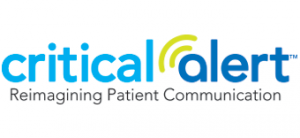The Complicated Relationship Between Nursing & IT
Solving one problem while causing another seems to be norm these days within clinical technology, and the acute care nurse seems to be the fodder for the ever-increasing one-upsmanship of so-called “progress” and “innovation”.
High-tech is often looked to as the solution to all of the health care industry’s woes. EHR’s were going to unify all medical records across the spectrum of care, interoperability promised to link every component in the ecosystem, HiTech/HIPAA was going to secure all patient data, big data was going to algorithmically predict and prevent disease and control costs, ACO’s were going to usher in the era of accountable care, HCAHPS were going to ensure the highest standards of quality and patient satisfaction, etc. etc. etc.
For each of these leaps forward, it seemed that the burden of capturing data, adhering to new standards of care, complying to new regs/rules/laws seemed to place more and more tasks on the front-line clinicians, the nurses working directly with patients.
I wouldn’t say that any of the aforementioned movements were bad or unwarranted, but I believe that there is an extreme disconnect between the governments writing legislation, the manufacturers/companies developing technologies to assist in compliance and the caregivers who must implement and live with these turkeys all while trying to perform our actual jobs – taking care of our patients.
While We Can’t Control Government, Surely Caregivers and Technologists Can Work Together
Engineers and developers may create a fantastic new technology as a solution to a problem or need and their companies may indeed successfully market these solutions to the administrative/leadership/IT teams. But, if these systems are created in a vacuum and without the input of the clinicians who will be using them on a day-to-day basis, it will ultimately fail as a deployment.
I am not saying that nurses are resistant to change or that we’re technophobes in any way. In fact, I would say that nurses in the acute care industry are some of the most tech-savvy clinicians in the world. I would also say that nurses are also the most flexible, highly-adaptive employees within our collective workforce. What I am trying to point out here is that technologies must be integrated into the clinical processes, tech-outlays and best practices already at play in these dynamic settings. If they aren’t or hinder our goals of patient safety, then we are not going to be happy about deploying these systems!
The Importance of Goal Alignment
There’s a saying that I come back to often: when you are holding a hammer, everything looks like a nail. While a tech vendor may actually create a novel solution to a real-world problem, they may forget to align that goal with the overall goals of the clinician. Everything we do should/must be oriented around providing the best standard of care for our patients.
While your team may have just developed the most super slick, sleek and sexy piece of equipment, if it was not developed with the goal of both staff and patient safety in mind, then I may only find it to be yet another lanyard, button or touchscreen standing between me and my patient.
Time away from the bedside is bad! Clinical interruptions are bad! If your shiny new tech has the potential to cause these (or other issues within the clinical workflow) then you better involve the clinicians in the review, purchasing and deployment! Better yet, you should have clinical leadership working hand-in-hand with IT.
Nurse Informatics To The Rescue
Something good is happening, though that is challenging these old paradigms. The increasing specialty of nursing informatics (and the experienced nurses that are filling these vital roles) is bridging the gap between nursing and information technology. While they play a vital role in integrating nursing practices with information management and analytics, Nursing Informaticists, more importantly, ensure the safety of the patients and staff through conscientious deployment of clinical based IT systems, services, guidelines, concepts and methodologies.
So, What Have We Learned?
If you do not involve nurses, you run the risk of resentment, slower adoption, issues with staff satisfaction and, ultimately, negatively impacting patient and nurse safety and satisfaction. Always involve your clinical team when it comes to tech/services within their processes and workflow and, when necessary, let them lead the evaluation and deployment. When the clinicians have a voice in the process, it can have a profound effect on their practice, their attitude and acceptance of the new medical device.
Tony Natale
Director of Sales
Tony has over 30 years’ experience in sales and sales management with over a decade in the nurse call industry.


